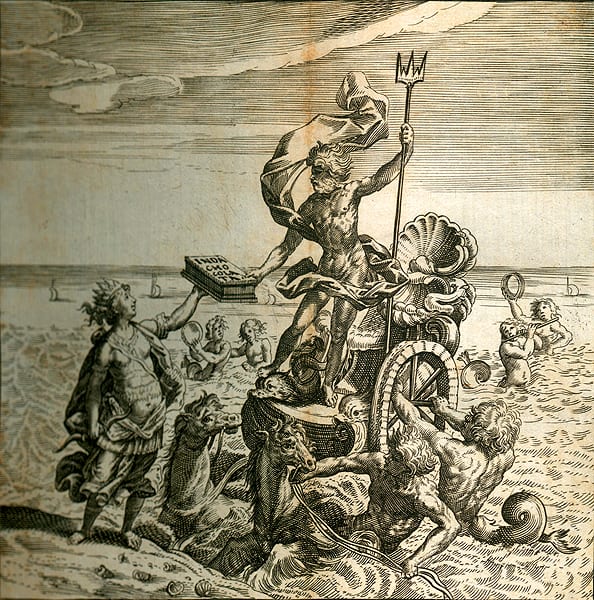Winter Break Hours and Services
Shields Library is closed through January 4, 2026. Digitization and interlibrary loan requests will be fulfilled after the library reopens on January 5.
Chocolata Inda: Opusculum de Qualitate & Naturâ Chocolatae, RM666.A68 V65 1644, Special Collections
50 Features of Special Collections: Chocolate – it’ll make you feel better

With Easter coming up tomorrow, what better way to celebrate than by shining a spotlight on chocolate? Our 39th feature is Madrid physician Antonio Colmenero de Ledesma’s treatise on chocolate, Chocolata inda: opusculum de qualitate & naturâ chocolatae. It was first published in Madrid in Spanish under the title Curioso tratado de la naturaleza y calidad del chocolate (Curious Treatise on the Nature and Properties of Chocolate) in 1631. Since then, it has been reprinted and translated into a handful of different languages by various people:
- Don Diego de Vades-forte into English in 1640 – the first book dedicated to chocolate to appear in England
- René Moreau into French in 1643
- G. Volckamer into Latin in 1644
- Wadsworth into English in 1652
- Vitrioli into Italian in 1667
- Moreau’s translation edited by Sylvestre Dufour in 1671 and 1685
- Then J. Chamberlaine into English in 1685

Our copy is the 1644 Latin translation by Johann Georg Volckamer. Through the Maynard Amerine endowment, this rare and early book on chocolate was purchased to celebrate the official groundbreaking of the Robert Mondavi Institute for Wine and Food Science on June 23, 2005. The frontispiece of this volume features a Native American representing the New World giving a gift of chocolate to Neptune, god of the sea, who represents the Old World. The form in which chocolate is presented in the image is inaccurate as we now know that chocolate was consumed as a beverage before 1800. Also bound with this volume is the editor of Chocolata Inda J.G. Volckamer’s Opobalsami Orientalis: in theriaces confectionem Romae revocati examen, a work about balms and pulmonary medicine.

According to Diego’s translation, Colmenero discussed four different points of chocolate: what chocolate is, as well as the qualities of cacao (the seed kernels of the cacao tree pods); the quality of chocolate; how to make and drink chocolate; when and how much chocolate to drink. Colmenero also included a recipe for drinking chocolate, which you will find at the end of this post.
As a physician from Andalusia, Colmenero considered chocolate to be a medicinal drink and wrote about the health benefits of it. His first encounter with chocolate occurred after visiting the sick on a hot day in the Indies (New Spain and/or Guatemala). After asking for water, he was persuaded to drink a jicara (a lacquered calabash gourd cup) of chocolate instead, which quenched his thirst, warmed and comforted his stomach. For Mesoamericans, they also enjoyed chocolate for its therapeutic effects: “when an ordinary amount is drunk, it gladdens one, refreshes one, consoles one, invigorates one.”
Chocolate, as we know it today, may not resemble the pre-Hispanic, reddish Mesoamerican beverage that was once topped with a foamy froth, required special drinking vessels, and included flower spices; nonetheless, we can all agree that chocolate still makes us happy and feel better psychologically.
And now for the recipe:
To every 100 cacao, you must put two cods of the chiles (long red pepper), of which I have spoken before, and are called, in the Indian tongue, Chilparlagua; and instead of those of the Indies, you may take those of Spain, which are broadest, and least hot. One handful of aniseed Orejuelas, which are otherwise called Vinacaxlidos: and two of the flowers, called Mechasuehil, if the belly be bound. But instead of this, in Spain, we put in six Roses of Alexandria beat to powder: one cod of Campeche, or logwood: two drams of cinnamon; almonds, and hazelnuts, of each one dozen: of white sugar, half a pound: of achiote, enough to give it the color. And if you cannot have those things, which come from the Indies, you may make it with the rest.
Works cited:
Boran, Dr. Elizabethanne. “Chocolate is good for you – according to Antonio Colmenero de Ledesma’s Chocolata inda. (Nuremberg, 1644), 12o.” Edward Worth Library. Accessed April 15, 2017. http://edwardworthlibrary.ie/book-of-the-month/2012-books-of-the-month/2012-march-book-of-the-month/
Colmenero de Ledesma, Antonio. Chocolata inda: opusculum de qualitate & naturâ chocolatae. Translated by Volckamer, Johann Georg. Norimbergae: Typis Wolfgangi Enderi, 1644.
“A curious treatise of the nature and quality of chocolate. Written in Spanish by Antonio Colmenero, doctor in physicke and chirurgery. And put into English by Don Diego de Vades-forte — Curioso tratado de la naturaleza y calidad del chocolate.” University of Oxford Text Archives. Accessed April 15, 2017. http://ota.ox.ac.uk/tcp/headers/A19/A19160.html
Gunasekara, Sara. “Gerome highlights an early chocolate book, Chocolata Inda.” Special Collections, UC Davis Library. Accessed April 15, 2017. https://library.ucdavis.edu/news/gerome-highlights-an-early-chocolate-book-chocolata-inda/
Norton, Marcy. “Tasting Empire: Chocolate and the European Internalization of Mesoamerican Aesthetics.” The American Historical Review 111, no. 3 (2006): 660-691.